You are here: Home » About Us » Wardens & Assistants » The role
Who are the Wardens and Assistants and what do they do?
There has been a tradition of Wardens managing Rochester Bridge for well over 600 years. The full name of the charity now responsible for the Bridge is ‘The Wardens and Assistants of Rochester Bridge in the County of Kent’ or its alternative formal name of ‘The Rochester Bridge Trust’.
The Rochester Bridge Trust is governed by the Court of Wardens and Assistants, equivalent to a modern charity board of trustees.
The primary objective of the Rochester Bridge Trust is to provide a free crossing of the River Medway at Rochester in perpetuity. The Court’s main focus is on ensuring the bridges in its ownership are safe, available and pleasant to use and that there is the funding and capability to maintain the structures properly and replace them when the time comes. However, its responsibilities are much broader than Rochester Bridge itself, and include managing the financial investments and property estates which fund the charity’s work, as well as archives, grants and education projects and all the administration, finance and communications functions of a modern charity.
The Court today has 13 charity trustees as its Members – the Senior Warden, Junior Warden and 11 Assistants to the Court.
There are five Committees, which each deal with a particular aspect of the Trust’s work and each Court Member has a place on one or more these committees.
How does one become a Member of the Court?
All new Members begin as Assistants to the Court. A number are appointed from the community after a public advertisement and interview process to fill any gaps in the skills of the Court as a whole. The remainder are nominated by Maidstone Borough Council, Medway Council and Kent County Council.
How does one become a Warden?
Once a Member of the Court has served as an Assistant for a number of years, they may put themselves forward as a candidate for election to the post of either Junior or Senior Warden. The Court holds a ballot and the successful candidates are elected for a term of two years. To stand in the election for Senior Warden, a candidate must first have served at least one term as Junior to ensure they fully understand the complexity of the role before taking on the prime position.
What do the Wardens do?
The Wardens chair all meetings of the five committees plus the full meetings of the Court of Wardens and Assistants. They also attend regular meetings with the Bridge Clerk (Chief Executive) to discuss ongoing business, as well as responding to ad hoc matters and supporting the Assistants in their role. They authorise large payments and approve important documents by applying the Trust’s charity seal, and also take the lead in hosting functions and representing the Trust at events.
You can find out more about the history and works of the Rochester Bridge Trust by exploring this website.

